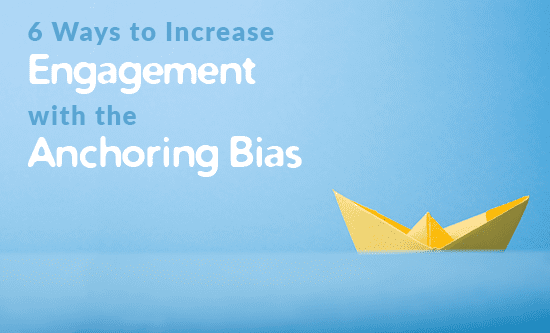Imagine it’s 6.00pm and you’re on your way home after a long day at the office. Stopping at a restaurant drive-thru for something to ‘tide you over’, the first thing you see is an advertisement for a $2 cookie. Your initial thought is that the cookie seems like a good price and a wise snack choice. There’ll definitely be no risk of spoiling your dinner you tell yourself!
However, on closer inspection of the menu, you notice that an entire burger meal and a cookie is only $6. Bargain! This type of decision-making is what’s known as the anchoring bias.
For those unfamiliar with the term, anchoring refers to the tendency of humans to latch on to the first piece of information they see when it comes to their decision-making.
All subsequent information the brain receives will be compared and contrasted with the original anchor. For example, in the above situation, $2 probably seemed like a reasonably priced cookie. However, when compared to the $6 complete burger meal, the cookie looked like less of a bargain and potentially not a ‘smart’ purchase. Anchoring is used by marketers all over the world, and examples come in numerous forms.
Here are the most trusted anchoring techniques to boost conversion rates:
Initial Price Setting: by listing an ‘original price’ on an advertisement, customers are automatically anchored to that primary value. When this sits next to a discounted price, the chance of a conversion rises exponentially. This is one of the most common techniques used by department stores, online hotel booking websites and supermarkets everywhere.
Multiple unit pricing: with the rise of wholesale shopping outlets like Costco, this tactic has held the spotlight in recent years. We all know that it’s questionable to buy one bag of peanuts for $2 when you can buy 50 bags for $20!
Price perception: when comparing a $300 watch to a $20,000 Rolex in a jewellery store window, the first option will always look like a great deal by comparison. By creating the illusion of a ‘cheap alternative’ next to a significantly higher priced item, the ability to engage a customer and close a sale increases markedly.
Humans love numbers: even for those who dislike mathematics, it’s guaranteed that they’ll be attracted to numbers when it comes to sales. By using a high number that represents almost anything e.g. total sales, customers, or even ratings, you will undoubtedly boost your chances of a conversion.
Provide options: by offering more options for the same price as your competitors, your offerings will automatically look like a good deal. However, don’t forget the paradox of choice!
The Gear Acquisition Syndrome (GAS): it is human nature to want something that is bigger, brighter, newer, shinier and faster than before. By reminding people that the new version of the iPhone is out now, you’ll have a stream of people updating their handsets in no time.
As you can see, just like other psychological marketing techniques such as priming and confirmation bias, ‘anchoring’ provides multiple opportunities for marketers to influence potential customers.
To utilise Anchoring as part of a balanced content strategy, marketers first need to understand what motivates their customers and what they respond to. Various psychological techniques can be used to present the same offering in different ways to different customers. It’s impossible for us marketers to find the most appealing offer for each individual customer in our database, that’s why technology is here to help. AI-powered marketing solutions process all your customer data to create the most relevant offerings and recommendations at scale.
For more details on psychological tactics combined with AI, click here. 
 By Helena Woo, Strategic Customer Engagement Director at DA.
By Helena Woo, Strategic Customer Engagement Director at DA.
With over 25 years of experience in data-driven marketing, she is constantly looking for ways to innovate, leading the strategic vision and value proposition for our clients. Helena has helped clients across industries achieve their marketing goals, marrying data and technology to deliver great customer experiences.
[pardot-form id=”46577″ title=”Blog Sign up test1″]



